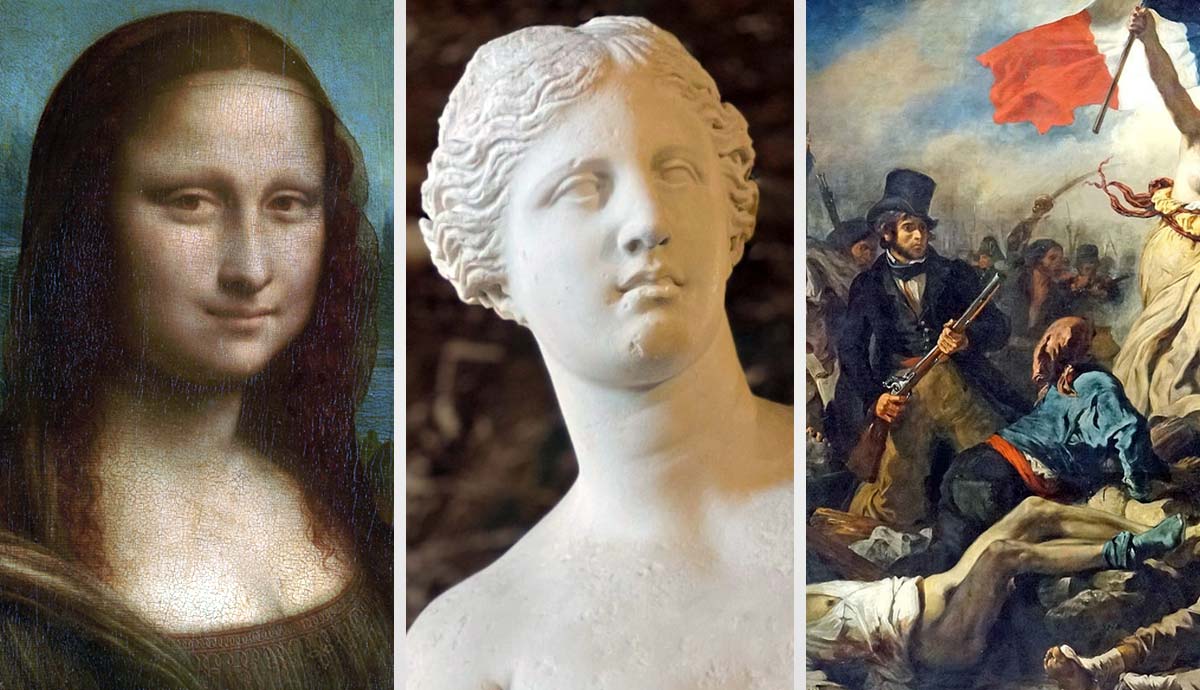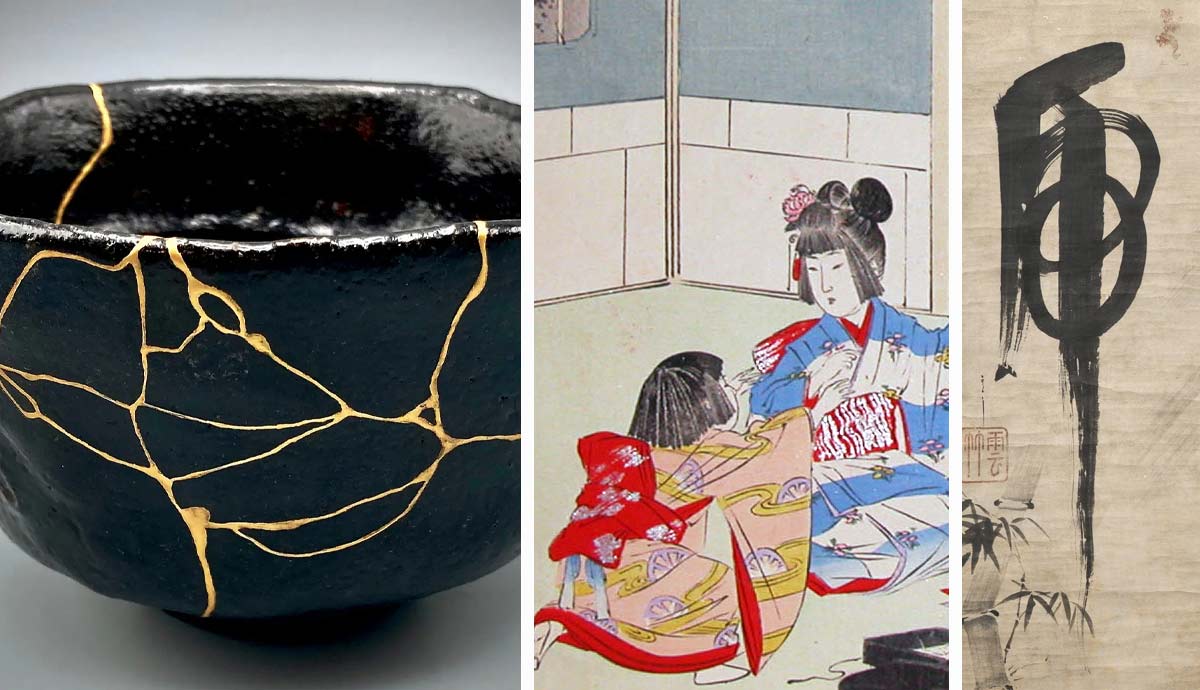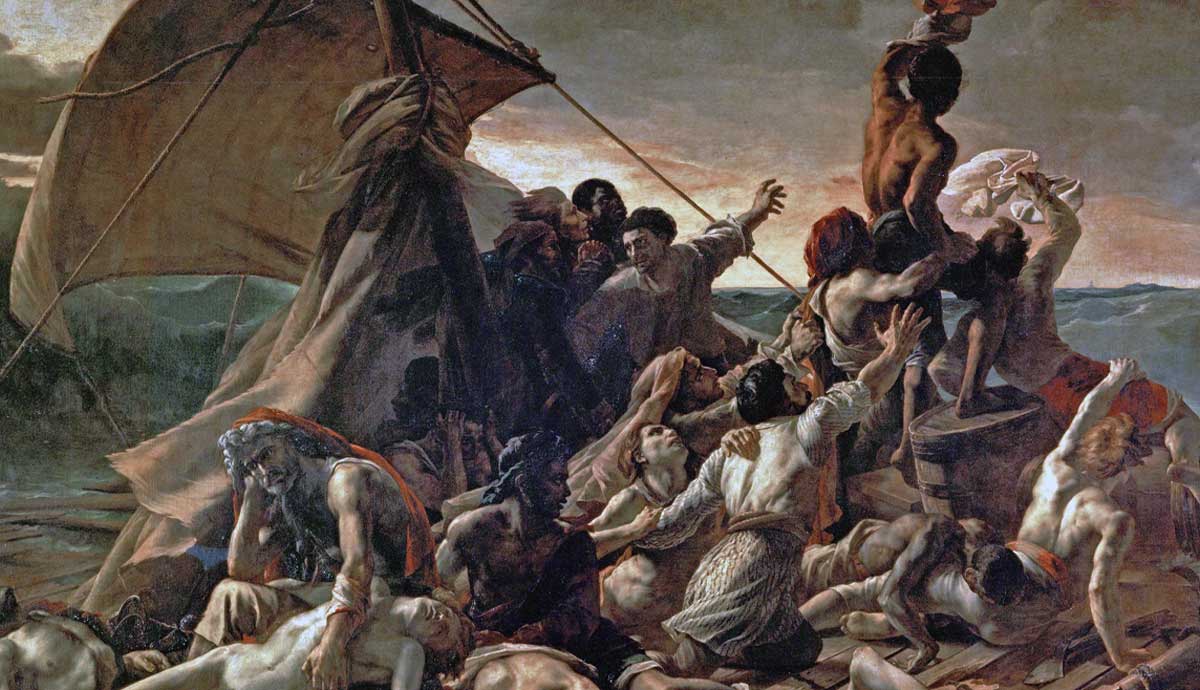
The Louvre is the world’s most visited museum, as well as the largest museum by physical size. Its vast collection spans thousands of years of history and contains paintings and sculptures by art history’s most celebrated artists. The museum is home to countless masterpieces. Here are 10 pieces of art that you absolutely have to check out when visiting the Louvre.
1. The Louvre’s Biggest Painting: The Wedding Feast at Cana

The largest canvas in the Louvre collection is Paolo Veronese’s monumental Wedding Feast at Cana. It was originally commissioned for the monks of the San Giorgio Maggiore Basilica in Venice. It is so big that when Napoléon’s forces took it from the church they cut it in two pieces to transport it. Veronese used a wedding scene to depict a biblical event. Christ’s first miracle was turning water into wine, which he performed at a wedding. The subject enabled the artist to use a contemporary Venetian setting, which was his forte. The painting’s colors, raucous excess, and lavishness epitomize 16th-century Venice and are strangely at odds with the religious subject.
2. Venus de Milo

The Louvre’s Venus de Milo is a supreme example of ancient sculpture and the Greek’s ideals of beauty. It was discovered in 1820 on the Greek island of Milos. The statue was first acquired by the French ambassador to Greece who presented it to the king of France. Louis XVIII later gifted it to France when he gave the piece to the Louvre in 1821.
The goddess’s identity was unclear when she was first unearthed due to her missing arms. Greek deities are often identified by the objects they hold in their hands. She was thought to be either the sea goddess Amphitrite, whom the residents of Milo worshipped, or the goddess of beauty, Aphrodite (Venus to the Romans). Her sensual form decided the matter in favor of the latter. This conclusion was supported by a fragment found near the figure—a hand holding an apple, which is attributed to Aphrodite. The museum discussed restoring the goddess’s missing arms but eventually decided against it.
3. Liberty Leading the People

Eugène Delacroix’s most famous painting has become a symbol of revolution. It’s important to know that Liberty Leading the People references the July Revolution of 1830, and not the French Revolution of 1789. It depicts the moment Parisians rose against the king. Charles X was overthrown after three days of fighting known as les trois glorieuses. He was replaced on the throne by Louis-Philippe.
The artist shows the people of Paris breaking through the city’s barricades. They are led by a female figure, part Greek goddess and part woman of the people. She is the representation of Liberty and is seen waving the French flag, known as the Tricolor. The flag had been used previously as a symbol of revolution, and later the French Empire. It was banned between 1815 and 1830. Delacroix deliberately used the colors of the flag—red, white, and blue—in combination in the painting in several places. The work is an enduring symbol of liberty and freedom and is often reproduced in both art and politics.
4. Psyche Revived by Cupid’s Kiss

Psyche Revived by Cupid’s Kiss is Antonio Canova’s masterpiece. Canova was considered the greatest Neoclassical sculptor of the late 18th and early 19th centuries. Inspired by mythology, like many greats before him, he referenced a story of love and envy in his sculpture. According to the myth the goddess of beauty, Venus, was jealous of Psyche’s beauty. She was so incensed that she sent her son, Cupid, to punish her. Instead, Cupid fell in love with Psyche and whisked her away to a place of safety.
The lovers were eventually torn apart by the lies and interference of others. In order to win Cupid back, Psyche was forced to complete a series of impossible tasks. The final challenge involved stealing a beauty potion from the underworld. Upon retrieving the bottle, Psyche smelled the contents and was overcome with a deathlike sleep. Cupid, hearing of Psyche’s fate, rushed to revive his beloved. His kiss brought Psyche back to life and that’s the moment we see captured in Canova’s beautiful sculpture.
5. Coronation of Napoléon and the Empress Joséphine

The renowned French artist Jacques-Louis David was commissioned to capture the moment of Napoleon’s coronation. His vast canvas is a celebration of the event with all the pomp and ceremony it entailed. The painting is hung in the Louvre’s Red Rooms, dedicated to the largest paintings in the collection. These rooms are filled with pieces of history painting which was considered the most prestigious genre of painting. Artists often used large formats to enhance the drama of the scene and enable viewers to feel part of the scene when standing before the enormous canvas. With this piece, David invites his audience to become part of the coronation.
6. The Caryatids

A caryatid is a sculptured female figure that serves as a column, or architectural support. Room 348 in the Louvre Museum is known as the Salle des Cariatides. It was named after the four caryatids that stand proudly at the entrance. Before it was a museum, the Louvre was originally a medieval fortress and then a royal palace. King François I had chosen the Louvre as his main residence in Paris and in 1528 he decided to demolish the medieval keep and construct a new building in the Italian Renaissance style.
The sculptor Jean Goujon was responsible for the creation of the caryatids in 1550. He used the classical Forum of Augustus, built in the 2nd century CE, as inspiration. These caryatids support the musicians’ gallery, which is a reminder of the days in which the gallery was used as a royal ballroom. Today the room showcases masterpieces of Greek sculpture.
7. The Winged Victory of Samothrace

The Winged Victory of Samothrace is one of the Louvre’s best-known women (the other two being the Mona Lisa and Venus de Milo). In the museum’s Denon Wing, she graces the top of the Daru staircase, a position that pays homage to her original place of display. The statue comes from the Greek island of Samothrace, where it was strategically positioned at an elevated location so that it could be seen from afar. The statue dates to around 190 BCE and is a representation of the goddess of victory, Nike. It was uncovered in 1863 and pieced together from over a hundred fragments. Her arms and head were never found. It is believed that the sculpture was created to celebrate a victorious sea battle.
8. Michelangelo’s Slaves

The Louvre’s Michelangelo Gallery was named after the Italian Renaissance artist. Here you will find Michelangelo’s twin sculptures: The Dying Slave and The Rebellious Slave. These pieces were carved between 1513 and 1515 and made to form part of Pope Julius II’s funerary Monument. Sadly, the project was never completed as Julius II’s successors deemed it too expensive. Michelangelo then gave the sculptures to a friend living at the French court, who then gifted them to King François I. The slaves spent almost 200 years moving from owner to owner before eventually becoming part of the Louvre collection in 1794.
9. The Raft of the Medusa

Théodore Géricault pushed boundaries with his historical painting The Raft of the Medusa. Regarded as the most important of the painting genres, history painting included modern, classical, or biblical scenes that told stories about historical figures or heroes. In 1819 Géricault decided to create a historical painting depicting a recent event—the tragic tale of a shipwreck.
The Medusa sank in 1816 due to the incompetence of her captain, who had secured his position through nepotism rather than merit. The ship did not contain enough lifeboats for all souls aboard, so when it ran aground 147 people were forced onto a makeshift raft. The helpless victims were assured they would be towed to safety, but once on the sea, those on the lifeboats severed the rope attached to the raft and cast it adrift. Those on board the raft were forced to resort to grisly measures to try to survive. Few on the raft lived. The painting serves not only as a reminder of a tragedy but a bold political statement. The disaster was seen as a result of the incompetence of the newly restored French monarchy and those in power. Géricault used his vast canvas to criticize those at fault.
10. The Louvre’s Most Famous Painting: The Mona Lisa

The Mona Lisa with her enigmatic smile is the most famous work of art in the world. The name means Lady Lisa and the sitter is thought to be Lisa Gherardini, wife of Francesco del Gioconda. The painting, created by Leonardo da Vinci in the early 1500s, is also known as La Gioconda to Italians and La Joconde to the French.
Although she was already well known, it was a theft in 1911 that thrust the Mona Lisa firmly onto the world stage. An Italian petty thief stole the work from the museum and took it back to Italy. The media storm that ensued meant that the painting graced the covers of newspapers all over the world and Lisa’s face was seared into the public memory. This secured the painting’s place as the world’s most recognizable artwork. Painted on a thin piece of poplar wood, the portrait is surprisingly small. Visitors can only view her from a distance as the portrait hangs behind barriers and bulletproof glass designed to protect and preserve it.









